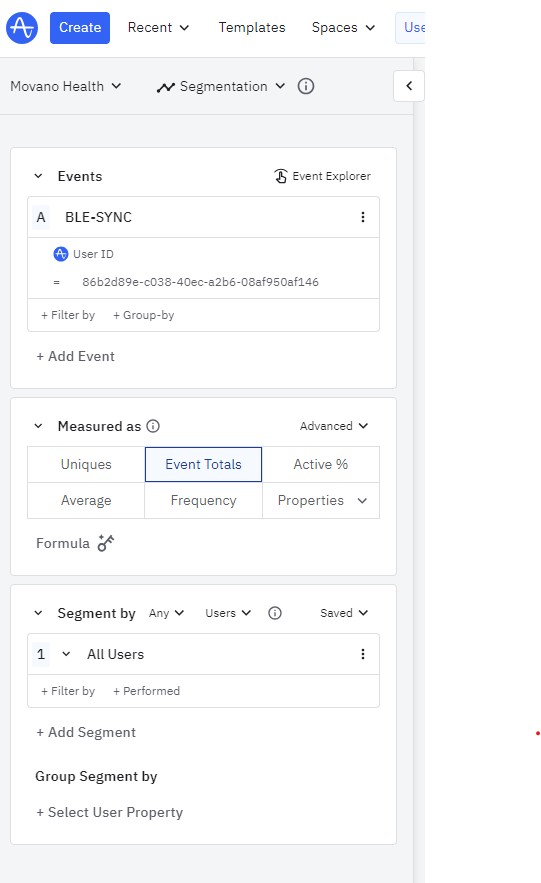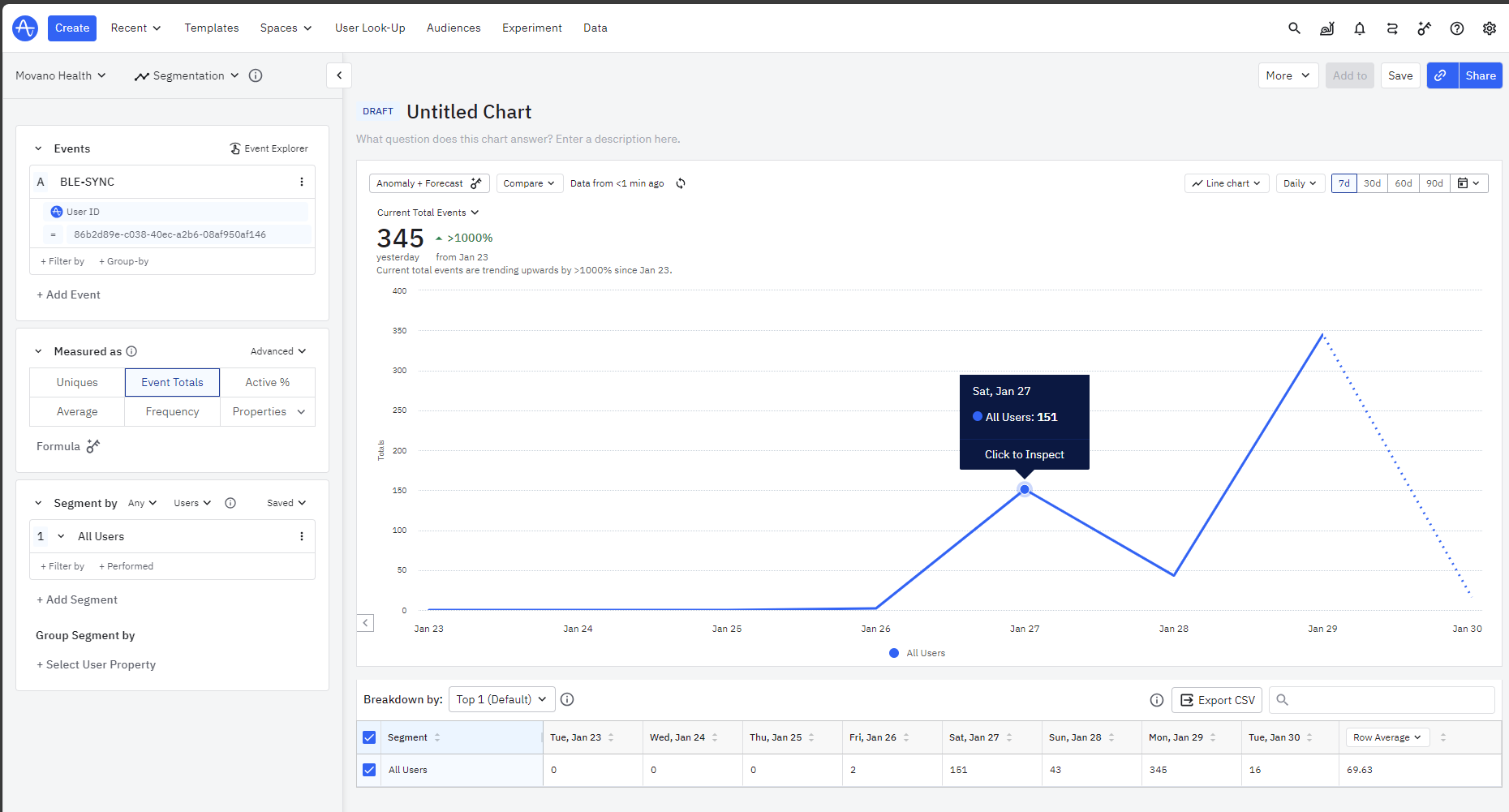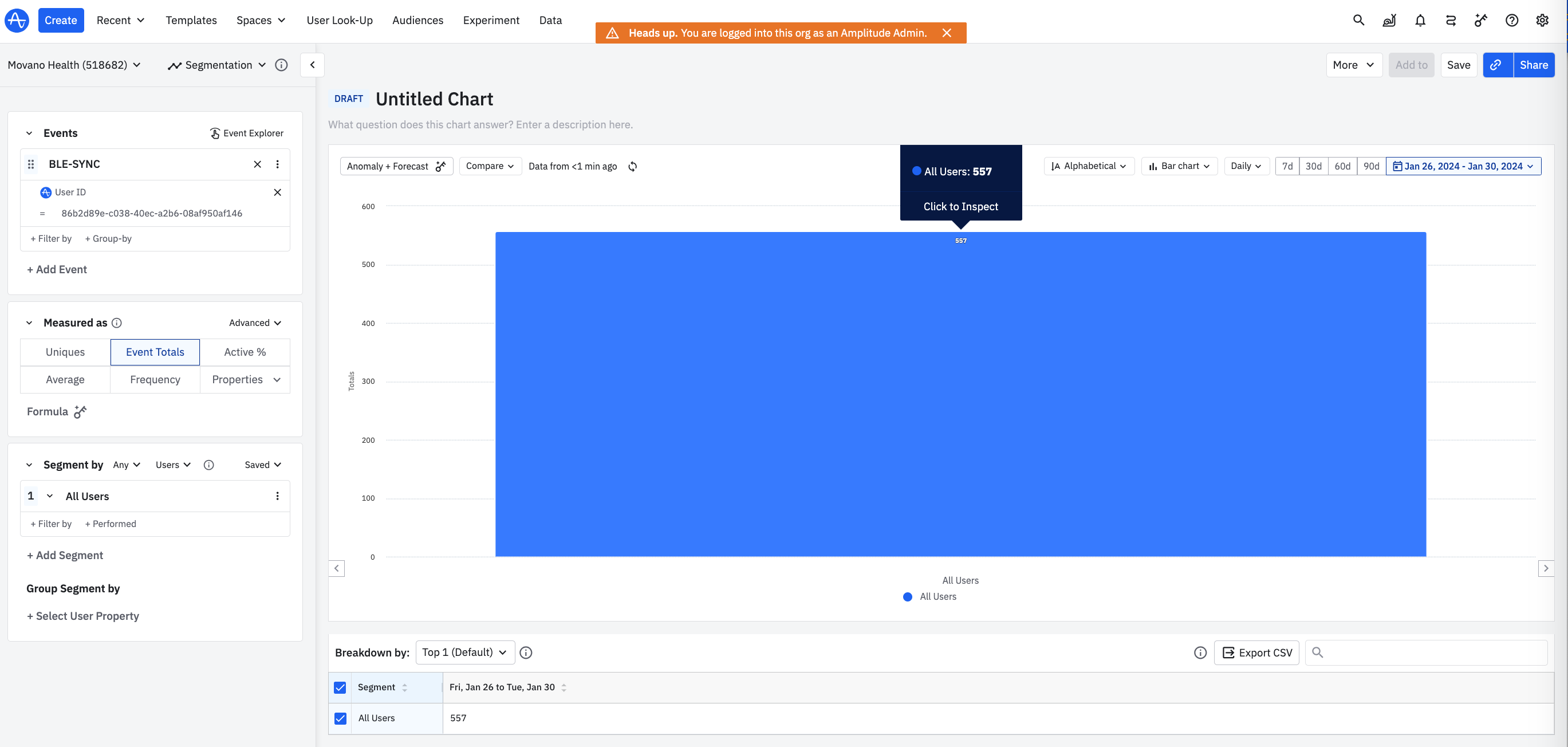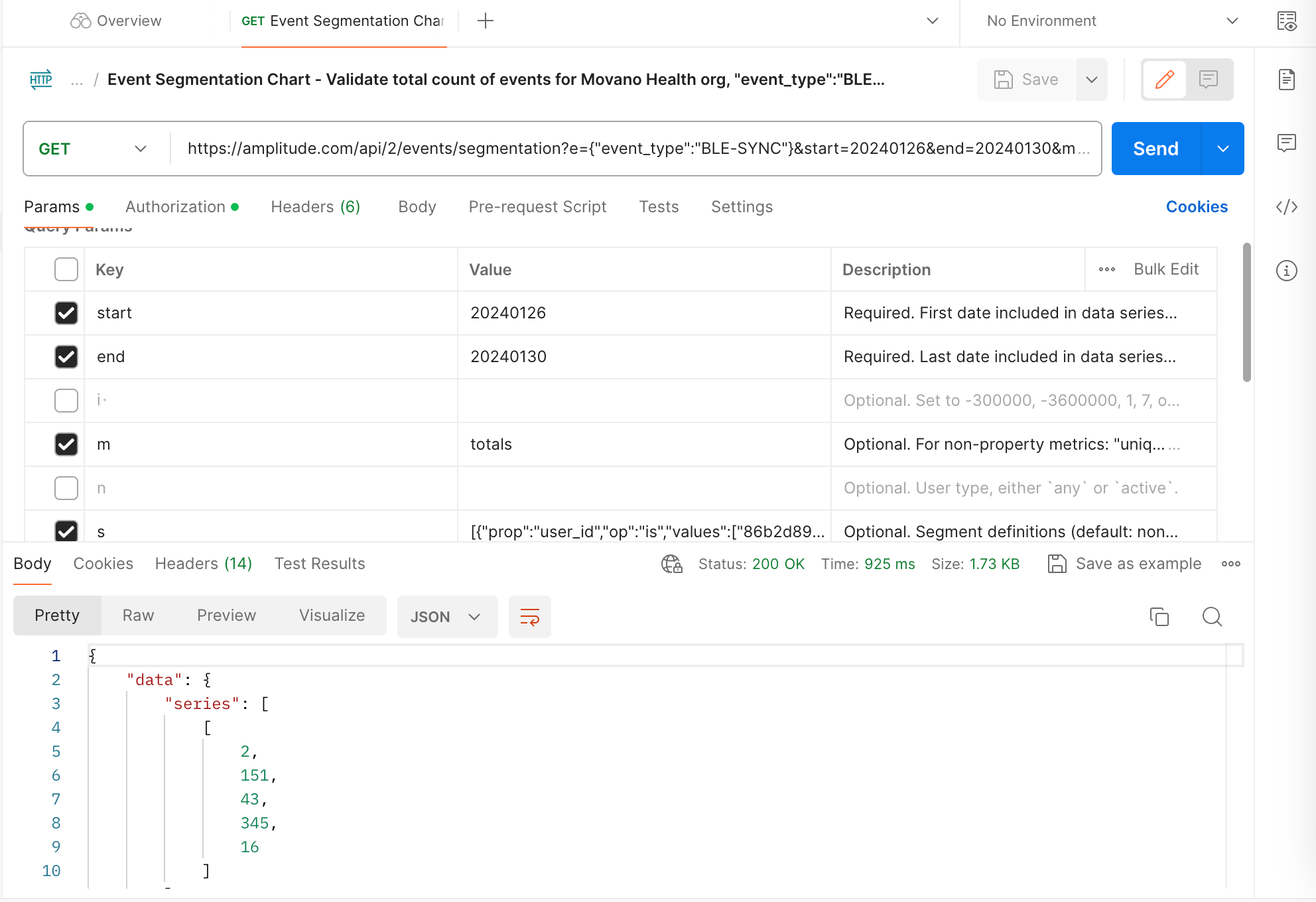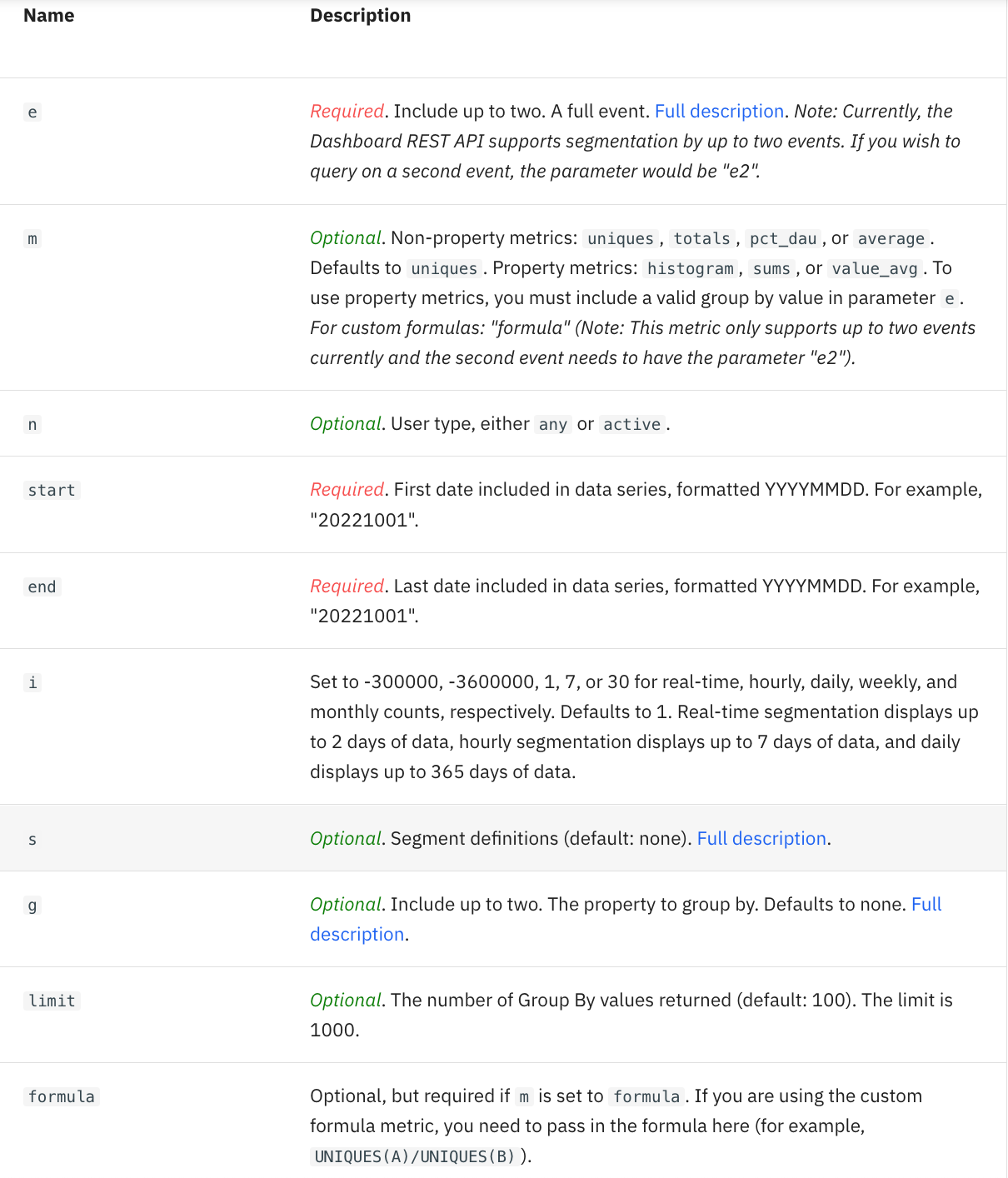We are a startup… still on free tier. Hoping to move up soon :).
I’m new to Amplitude so hoping this is not a silly question:
On the https://app.amplitude.com/, I can create a new segmentation chart and just one event “EVENT-A” and apply one filter (User ID = ABD). I then view both “event totals” and “Uniques”. For Event totals, I get number such as 151, 43, 200 for the past 3 days.
When using HTTP V2, and querying with the same event with the same filter, I get values such as 5768. Why are these so different? I made sure to use the “m” : “totals”. Below is my curl. I’m hoping there is something obvious I missed?
Looking at other similar posts: I only have one project so the API key I’m using is by definition the only project I have access to.
curl -X GET 'https://amplitude.com/api/2/events/segmentation' -H 'Content-Type: application/json' -d 'e={"event_type": "EVENT-A"}' -d 'f=[[{"prop": "user_id", "op": "is", "values": ["ABCD"]}]]' -d 'start=20240126' -d 'end=20240130' -d 'm=totals' -u 'XXX:YYY'




